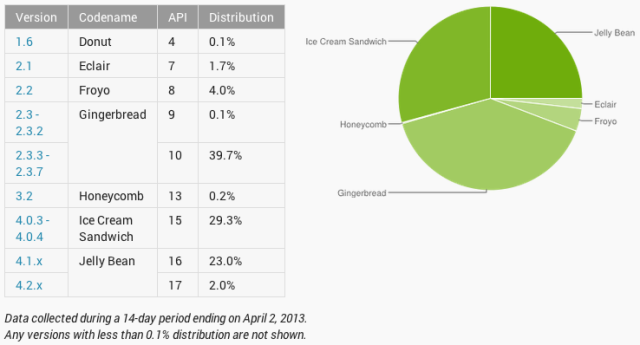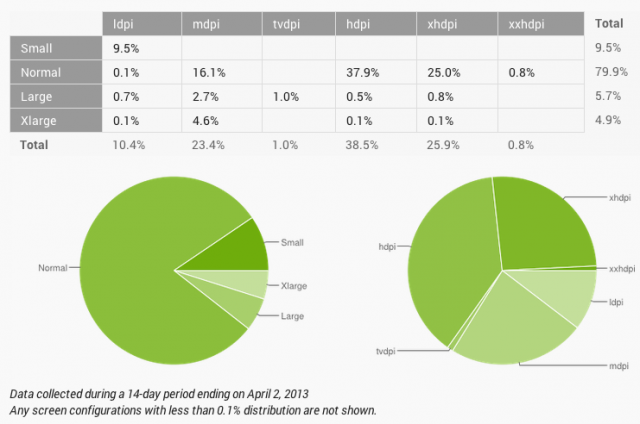
Jelly Bean has finally cracked a 25 percent install base across Android devices in use, according to data released by Google Wednesday. The OS version is still bested by 4.0 Ice Cream Sandwich, which is present on 29.3 percent of devices, as well as by 2.3 Gingerbread on 39.8 percent of devices.
The data on Android versions was collected by Google over a 14-day period ending April 2. The company now measures only devices that check in to Google Play rather than any device that pings Android servers.
Back in March, 4.1/4.2 Jelly Bean was still lagging at a 16.5 percent user base five months after launch. That month marked the first that Android 4.x versions overtook 2.x ones in their installed base.
Now, 2.x and 1.x versions collectively have fallen to an install base of less than half the phones studied, to 45.8 percent. 4.x versions are now present on 54.2 percent of phones. However, Google’s most recent version release, 4.2, has reached only 2 percent of phones.
1.6 Donut and the earliest versions of Gingerbread (2.3-2.3.2) duke it out for the lowest apparent install base at 0.1 percent, and the overlooked 3.2 Honeycomb comes in at 0.2 percent. Granted, Google’s new Google-Play-based methodology may underrepresent the number of actual phones that have not been updated: someone who never goes to buy an app probably doesn’t cotton much to the idea of updates, either. Still, this new measurement method will help developers better target users who are apt to buy their products.
While the study shows movement, Google is still not moving all that quickly with its newest versions. Android 4.1 Jelly Bean is now ten months old and still has made it to only one in four phones. Most of the models that don’t already have it never will, thanks to carrier struggles.

Along with the version spread, Google also included charts of what device resolutions and pixel densities are currently in use. Hdpi “normal” displays (smartphone-size ones around 200-275 ppi) are the most common at 37.9 percent, followed closely by xhdpi “normal” displays (around 300 ppi or higher) at 25 percent.
Tablets still come in at a relatively small share of the Android base: only 10.6 percent of the devices studied were “large” or “xlarge” displays (7 inches or bigger). The number of low-dpi displays have dwindled to 10.4 percent, while medium-dpi displays are holding strong on 23.4 percent of devices.
The last graph is heartening: of all devices that went to the Google Play store, 99.7 version support the latest version of Open GL (2.0).
Listing image by Ars Technica
reader comments
99